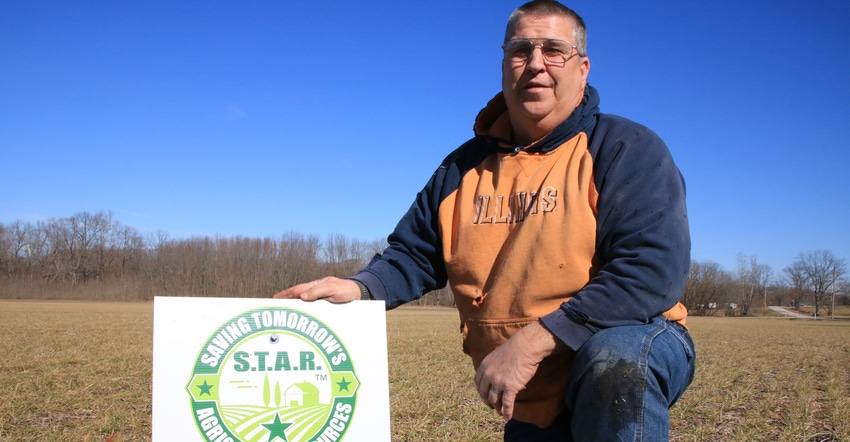
The growing season for the popular cover crop cereal rye isn’t over in Illinois, but for some farmers slow to start or expand their covered acreage, it never began. Seed prices doubled to $28 a bushel for some areas of the state in September due to a national shortage. Rained-out harvests also put off seeding the overwintering crop, in some cases indefinitely.
“Once you got through October, it was just nothing but wet,” says Steve Fulling, Palestine, Ill., farmer and Crawford County Soil and Water Conservation District chairman. “Harvest lasted for quite some time. You’ve got to get one crop off before you get another one planted, and some didn’t get it planted.”
Fulling says he was able to drill all his cereal rye seed into corn stubble shortly after he drilled annual rye into bean residue. He was finished by early October on the land he owns and a few fields he rents, having started annual ryegrass a couple of weeks after Labor Day. He says cereal rye can be planted later because of its ability to grow more biomass in the spring.
“The annual ryegrass came up really nicely this year. The cereal rye is a little disappointing, but hopefully it turns around here in April,” Fulling says, adding that an earlier-than-usual snap from moderate to colder temperatures may have hampered growth for cereal rye.
He started cover cropping his no-till farmland with cereal rye and its annual cousin four years ago, and at first, he flew the seed on. The coverage was spotty but quick. He also had to use more seed per acre, so he made the switch to labor-intensive drilling two years ago.
“I’ve always been able to plant the seed I’ve bought with some part-time help, but if I’m really going to increase my cover crop acreage, what I need to do is just hire somebody in the fall full time to sit in that seat and drive that drill,” he says. He says he’s busy harvesting soybeans as quickly as he can before the next rain. “I’m anxious about getting my annual rye planted right after the beans come off to give them a head start.”
Some of Fulling’s cover-cropped fields are enrolled in the Conservation Stewardship Program. Cover cropping is one of his five complementary practices for reducing erosion and the loss of phosphorus bound to soil particles. While most of his land doesn’t drain into the Embarrass watershed, a priority phosphorus loss zone designated by the Illinois Nutrient Research and Education Council, Fulling says he and many of his neighbors have taken up cover cropping to hold soil in place — often without CSP cost assistance.
“The third week of March is when I usually go out with a four-wheeler to terminate my annual ryegrass. It’s like driving on your yard. It’s firm; it holds up well,” Fulling says, adding that the most challenging thing he faces with planting into annual ryegrass is the massive root system, which sometimes, does not allow for the trench to close completely with his current closing wheel setup. This is something he is still tackling.
He terminates cereal rye at the beginning of April, giving it a little more time to grow than annual rye, because he plants soybeans later and relies on the delayed killing of cereal rye to help prevent weed seed germination. Other farmers plant into cereal rye and put off termination much longer to extend the weed control benefit further into the growing season, but Fulling has ruled out that practice for now because he has voles in his area.
“I'm not taking that leap yet. One of the reasons I terminate early is you get rid of the habitat and then the coyotes can get out there and hunt the voles,” he says. “When you have cereal rye 4 foot tall, that’s like a needle in a haystack.”
For his efforts, Fulling has received a five-star rating from the Saving Tomorrow’s Agricultural Resources program. He filled out a questionnaire customized for the Wabash River Valley located at starfreetool.com. The goal of the Illinois-wide STAR program is to help companies with sustainability goals by connecting them to producers who preserve soil as well as prevent nitrate and phosphorus loss downstream.
About the Author(s)
You May Also Like




